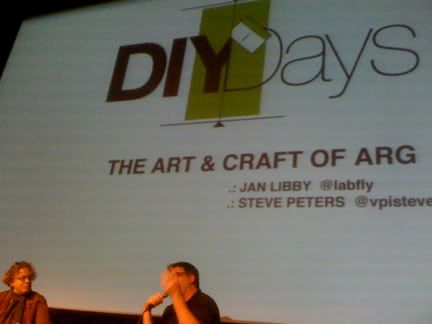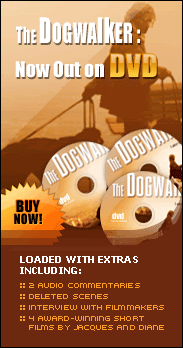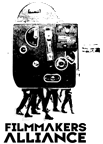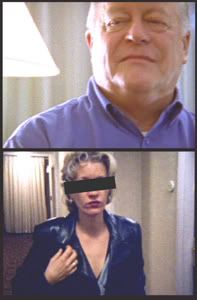And it reminds me how much I love story-telling. This is the essence of my attraction to filmmaking. But filmmaking for me is story-telling taken to another level with all kinds of opportunities for embellishment, texturing and layering. And when those opportunities are fully explored, cinematic story-telling does NOT, for me, need to have an obvious beginning, middle and end...in other words, a traditional narrative. Of course, all stories, no matter how experimental or artsy-fartsy have a beginning, middle and end, just by virtue of the basic physical reality of them starting and ending at some point, with the middle being,...well,...the middle. But stories don't always have to follow traditional three-act structure, where things are set up in the beginning, complicated in the middle and resolved at the end.
As I've said, there are all kinds of ways to tell a story and for me, the stories - and characters within that story - that are most interesting never completely resolve. They are stories and characters that raise questions and explore issues, rather than place some neat and tidy bow on life's complexities. Now, because life is so difficult and demanding, I understand that the majority of movie-goers crave fantastical distraction in their cinema and, in the end, often like to have all of their fears abated and dreams vicariously fulfilled onscreen in simple, clean, heart-warming fashion. They want their films to be like a warm, fuzzy blanket - but one that feels new and familiar at the same time.
There is definitely a need for those kind of films. But I feel like supply far exceeds demand, so that other ways to experience cinematic story-telling have been completely crowded out. So much so that many movie-goers are desperately hungry on both a conscious and unconscious level for something new and different. Yet, they are also confused by alternative ways of telling stories because they are not used to them. In a sense, they need an orientation - or, actually, a re-orientation - to story-telling that falls outside the bounds of the dominant story-telling paradigm. I say re-orientation because there was a time when the dominant story-telling paradigm was very different. Ancient and biblical myths and stories, upon which most of Western story-telling tradition is based, are very complicated pieces of story-telling. Sometimes, they are even surprisingly messy and sprawling with conflicted "heroes" that are far from one-dimensionally "good" - often engaging in behaviors that are downright horrific by modern standards.

HERCULES: ONE VERY F%$#ED-UP DUDE.....
Clearly, most modern audiences feel that a story isn't a story if it doesn't have an obvious point. I don't completely share that sentiment, but I don't completely disagree with it, either. The bigger issue for me is HOW we come to understand the "point" of a story - which I believe has changed dramatically over time, with the means to understanding a story having been bleached out and homogenized by the pressurized washer/dryer combination of popular culture and commerce. In what has become the traditional story-telling paradigm, a main character has a problem and most resolve it by the end of the story. It always gets resolved, of course, and the point of the story (or "message" if the story is heavy-handed) lies in how that main character - or the forces of nature that guide the character - resolves the problem. But telling stories in this way has not always been the case. Ancient myths and stories were often epic in nature with no clear resolution. The story-telling journey was strewn with all kinds of metaphorical nuggets that you could pick up along the way or on any number of story-telling side-roads. It was filled with complication and contradiction, leaving so much of the story open to interpretation, thus demanding an investment of thought on the part of its audience. In other words, the story was about the journey, not the destination (or resolution).
Now, of course, when I speak of the traditional modern paradigm, I am speaking about films because that is where it is most prevalent. Books can use the art of words and imagination to take you into deep, interior spaces. And music is, well, music. It's called music, not lyrics with sounds. And, of course, musical lyrics can indeed be poetry. No, this traditional story-telling epidemic flourishes in the filmmaking universe. But, of late, there has been a bit of relief coming from a rather unexpected source - television. Cable television shows like The Sopranos, Six Feet Under, Carnivale, BattleStar Galactica, Big Love, Mad Men and more, are kind of taking us back to the ancient ways of story-telling. The "heroes" are, without exception, flawed. The situations are complicated and never easily resolved, with tough, even brutal, decisions being made - and actions taken - at every turn. And each of those decisions/actions mean something on a spiritual level. Something more is at stake than just the action itself. The stories play out over a long period of time allowing the space for gradual character development and surprising character turns as well as many side-roads, subtle parables and metaphorical anecdotes. At the end of their cable runs, nothing is ever cleanly resolved, just at a point where there is nothing left to say....and much to consider.
These beautifully written and made shows put most "independent cinema" to shame. Yet, they are still somewhat constrained by the demands of commerce and small-screen presentation, despite how far they manage to push those constraints. A big-screen masterpiece on the order of, say, Fellini's "8 1/2" or Tarkovsky's "The Mirror" makes it abundantly clear how far we can go in cinematic story-telling ambition and excellence. But let's not put too much pressure on ourselves. If I could leave this earth having been responsible for even one of the above-mentioned cable t.v. masterpieces (and any of the many others that have come before them throughout the years), I would indeed be a very contented fellow.
So, how do we go about creating this level of work - telling these kind of stories? Well, as always, immerse yourself in great works - music, art, books and movies while living life fully and observing (and deeply considering) the natural rhythms and complexities of it all. But, beyond that, a good first step might be to go back to the future. Meaning, re-discover the classics. Re-read the ancient myths and stories and get a feel for their structure and complexity - and get a feel for the way metaphors and ideas are integrated into the overriding narrative. By reaching back to them, we will be propelling ourselves forward to the future of story-telling. Because that future is not in new technologies (i.e. blogging, ARG's, transmedia, etc., etc.) and the instruments of delivery. The future is in the stories themselves. It is in the fresh, distinctive ideas and story-telling modalities that exist within each and every one of us. And to get the full breadth of that potential we may need to reach way back to what has been somewhat forgotten and bring it back into our consciousnes as a guide to our story-telling future.















